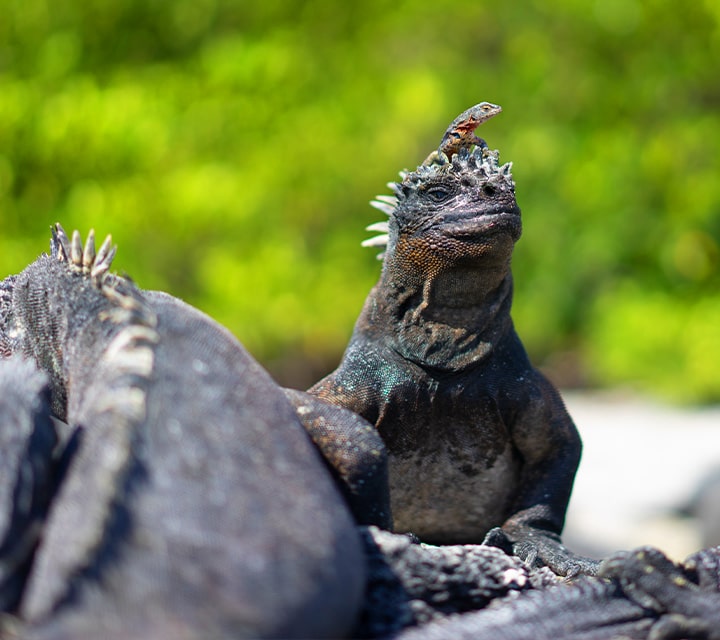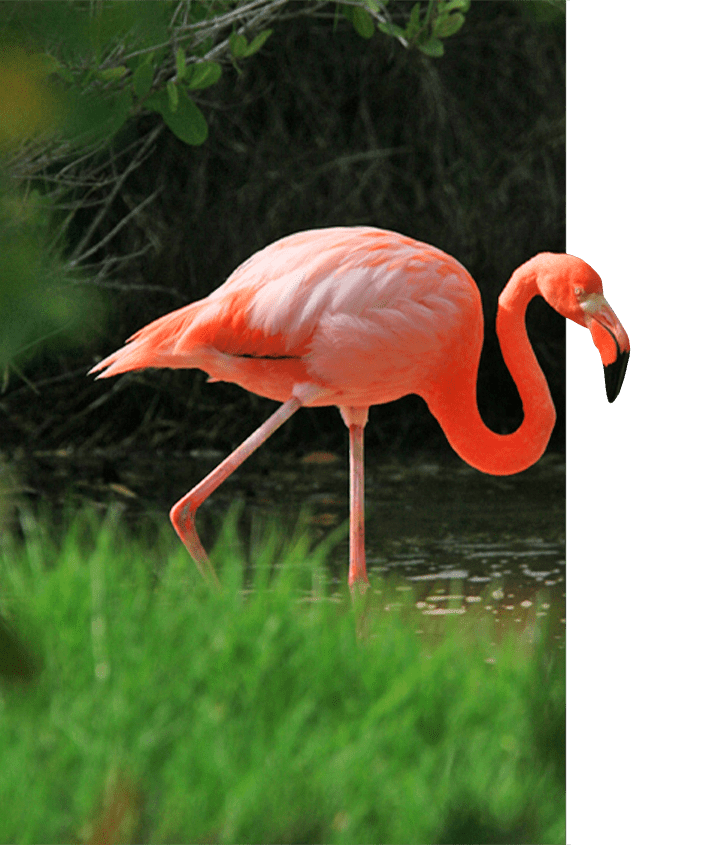
One of the things that makes the Galapagos so special is that while the tropical weather makes visiting at any time of year a wonderful experience, you can catch unique wildlife encounters, climate conditions, and adventures depending on which time of year you go.
February in Galapagos is no exception, with truly outstanding weather and perfect conditions for seeing some of the Islands’ most legendary Galapagos wildlife. Here are 5 of the best reasons to visit the Galapagos in February.
Temperatures for Galapagos Islands in February:
| Average Low: | Average High: | Water Temperature: | Average Rainfall: |
|---|---|---|---|
| 74°F / 23°C | 86°F / 30°C | 76°F / 24°C | 1.00 inches / 2.54 cm |
1. The Best Underwater Visibility of the Year
That’s right— while the waters of the Galapagos are clear and beautiful year-round, February brings the absolute peak of underwater visibility. Perfect for snorkeling and exploring the marine life in the area, you won’t believe just how clearly and how far you’ll be able to see beneath the surf. This lets our guests spot marine life that might otherwise have been hiding just out of sight, and makes for some of the world’s best snorkeling conditions. If you want to get a high-definition view of everything that lives beneath the waters of the Galapagos, February is an excellent time to get it.
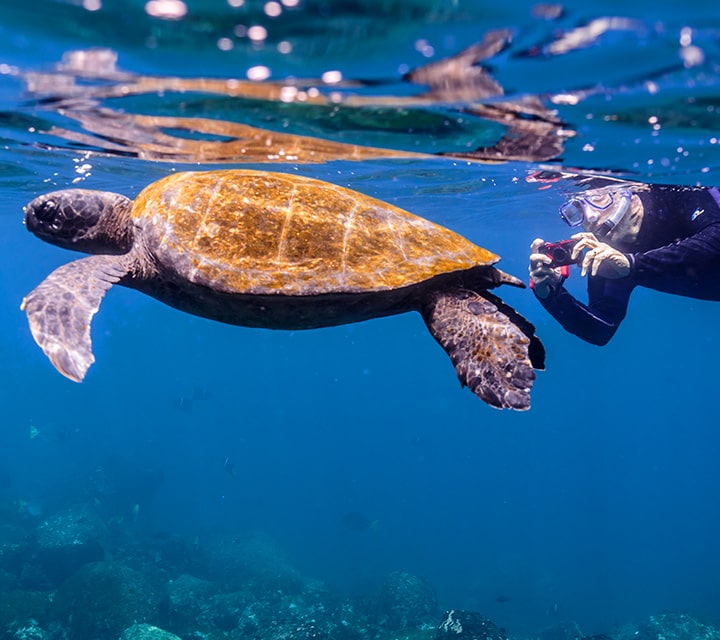
2. Clear, Blue, Galapagos Skies
We also love February because it brings some of the most dependably clear skies of the year. You can count on the gorgeous blue hues of the sky to match the turquoise shimmer of the water for more days than any other month in the year. That means plenty of sunshine as you luxuriate on the deck of the yacht, lounge on the beach, explore the natural landscape, or splash in the coastal surf surrounding the Islands.
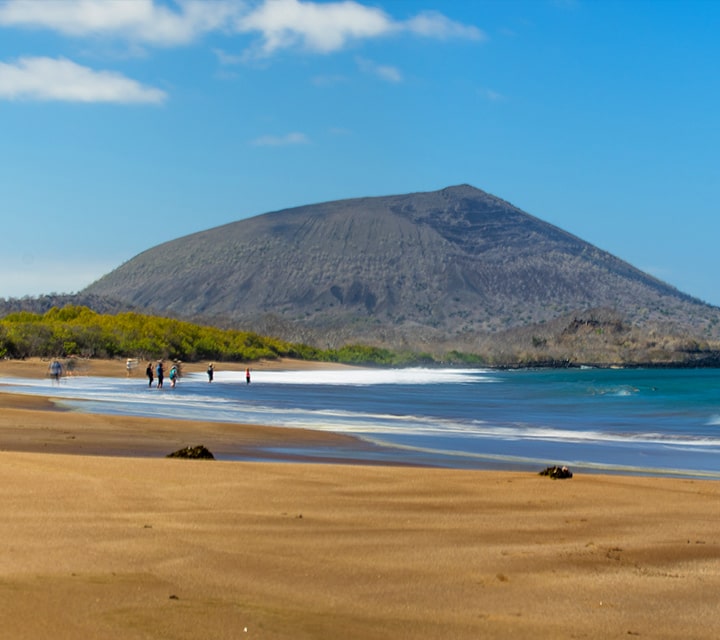
3. Wonderfully Warm Water and Air Temperature
Speaking of splashing in the surf, February brings some of the warmest water temperatures of the year to the Galapagos’ coastal seas. The water temperature averages a delightful 77°F (15°C) that’s straight out of a dream, meaning that you’ll never have to cut a snorkeling or swimming session short because you’ve become a little too chilly.
Meanwhile, the air temperature is equally divine with an average low of 75°F (24°C) and an average high of 86°F (30°C). Whether you’re on land or in the water, you’ll be comfortable at all times—even at night, when temperatures in the tropical climate won’t dip low enough to make you feel outside of parardise.
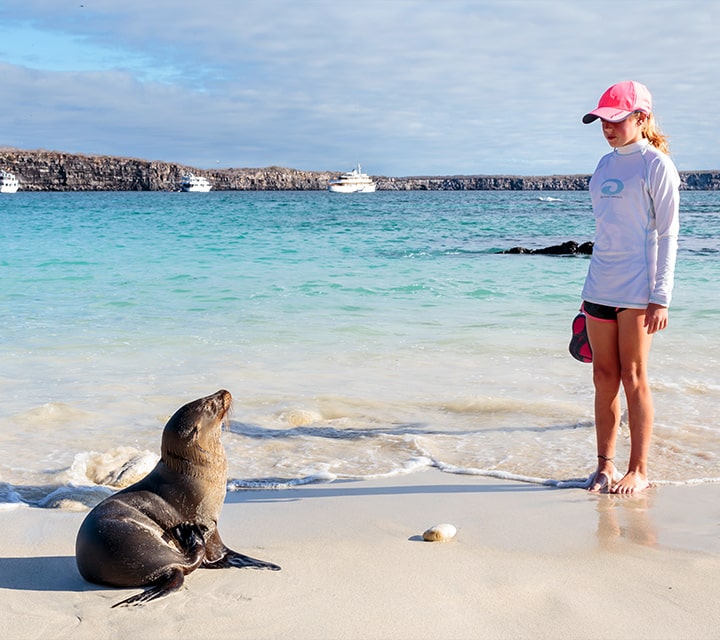
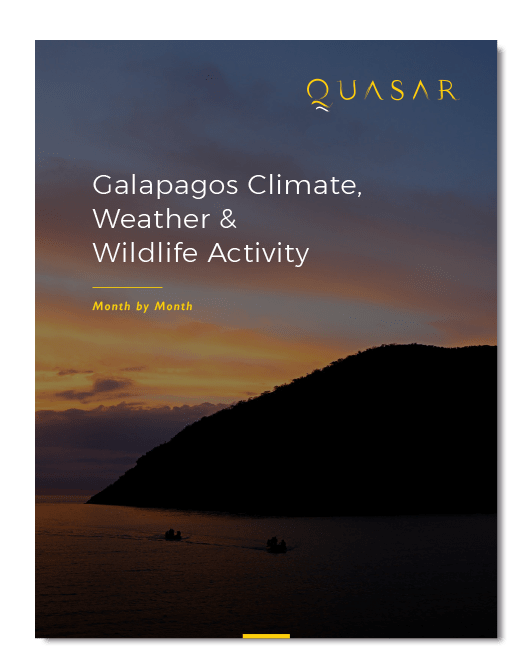
5. Iguanas & Iguanas & Iguanas... Oh My!
Tortoises aren’t the only reptiles that are particularly active and enchanting at this time of year. February lands in the mating season for Marine and Land Iguanas in the Galapagos, and these iconic reptiles can be seen throughout the Island (and sometimes in the water!) during the month. Whether you’re looking for outstanding nature photographs or just want to take in these impressive specimens for yourself, February is an excellent time to see them during one of the most important times of their lives.

5. Iguanas & Iguanas & Iguanas... Oh My!
At Quasar, we love the Galapagos—from the stunning landscape to the incredibly diverse and unique wildlife and everything in between. We want our guests to know exactly what adventures await them whatever time of year they choose to visit.
February has proven to be a favorite among our Guests for years, but don’t take our word for it—ask past Guest BARBARA P.:
“Trip of a Lifetime! Amazing all-around experience. I would recommend Quasar (and our vessel, the Evolution) to anyone hoping to get the most out of their trip to the Galapagos. From the ship's world-class crew, to fabulous daily excursions (snorkeling, kayaking, hiking), to the highly informative nightly talks, we truly experienced the archipelago in all its glory. (Great meals, too.) You won't regret this trip!”
Click here for more information on Galapagos Islands Weather
